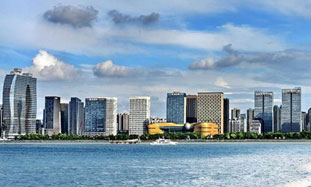Beijing-Hangzhou Grand Canal
There are two miracles in classical China -- the Great Wall and the Grand Canal – with the canal, known as the Beijing-Hangzhou Grand Canal, always being seen as the pride of the Chinese people and a symbol of its cultural achievement for its size and grandeur. It has historical and cultural importance and is the longest artificial river in the world.

[Photo provided to chinadaily.com.cn]

[Photo provided to chinadaily.com.cn]
History
The Grand Canal goes back 1,300 years and a part of its dates back to the 5th century BC. It starts in Beijing and ends in Hangzhou, passing through the city of Tianjin and Hebei, Shandong, Jiangsu and Zhejiang provinces. It links China’s two longest rivers, the Yellow and the Yangtze, and has a total length of 1,794 kilometers.
In olden days, traffic on land depended on men and animals and was costly, slow, and small in scale, so large cargo was usually moved by water. The Grand Canal was originally intended for grain and luxuries, then later, merchants began using it for commodities, turning the corridor into a prosperous economic belt.

[Photo from en.gotohz.com]

[Photo from en.gotohz.com]
Some foreign visitors called it the Emperor’s River because of its importance for Chinese emperors throughout history and many from different dynasties in the north used the Grand Canal to ship goods to Southern China. In the Qing Dynasty (1644-1911), the Kangxi and Qianlong emperors made 12 trips to the south of the Yangtze River via the Grand Canal .
The Hangzhou section starts at the town of Tangqi, in the Yuhang district to the north and ends in the Qiantang River in the south, crossing four urban districts -- Yuhang, Gongshu, Xiacheng and Jianggan.
In 2002, the Hangzhou government began a renovation and development project based on the canal for the overall improvement of water quality, bridges, old streets and buildings along it and now, there is a scenic belt along its banks in Hangzhou, with a natural landscape and cultural attractions such as historical streets, cultural parks, museums and temples.

[Photo from en.gotohz.com]

[Photo from en.gotohz.com]

 Print
Print Mail
Mail
 20 Cultural Symbols
20 Cultural Symbols Why Zhejiang
Why Zhejiang Experiencing high-tech products at WIC
Experiencing high-tech products at WIC Zhejiang Release
Zhejiang Release Zhejiang News
Zhejiang News